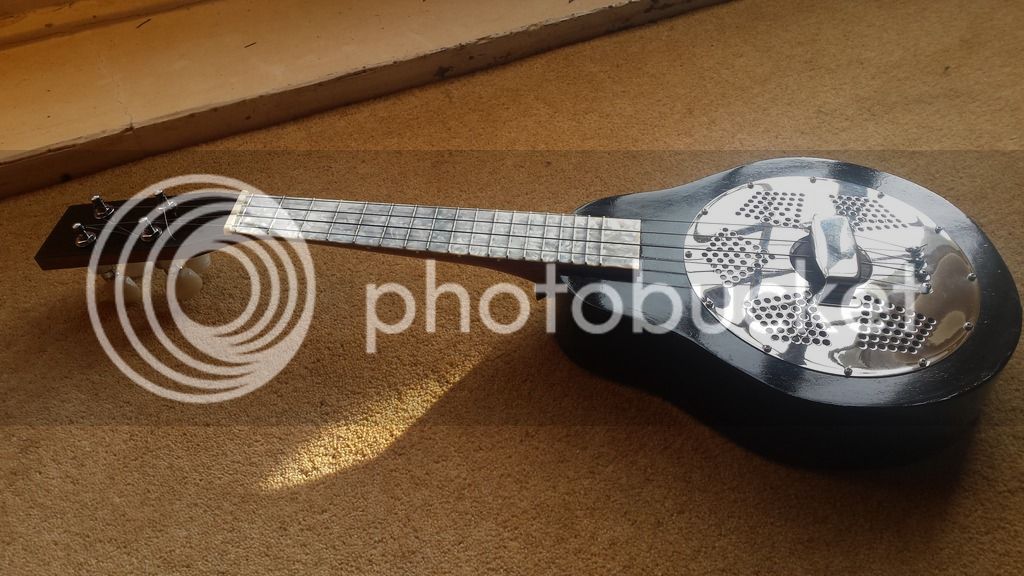profchris
Established Member
I'm making myself a resonator ukulele. The top will be mainly a chrome cover plate, and the fingerboard will be white pearl celluloid (known as Mother of Toilet Seat in the fraternity). So of course, I need to paint the body gloss black. The body will be birch ply.
I've done something similar before, using shellac to seal the ply, spraying black automotive paint, wet sanding to level, and then two or three coats of Tru Oil on top. This looks good from a distance, reasonably OK close up.
Any suggestions for getting a higher quality gloss black finish? I'm guessing the secret is in the primer and/or undercoat, but I am remarkably ignorant about painting.
The finish needs to be fairly thin, but not at the "only measurable in microns" level.
I've done something similar before, using shellac to seal the ply, spraying black automotive paint, wet sanding to level, and then two or three coats of Tru Oil on top. This looks good from a distance, reasonably OK close up.
Any suggestions for getting a higher quality gloss black finish? I'm guessing the secret is in the primer and/or undercoat, but I am remarkably ignorant about painting.
The finish needs to be fairly thin, but not at the "only measurable in microns" level.

































